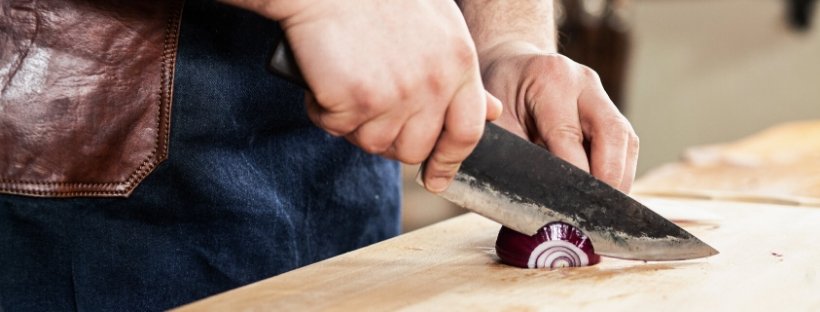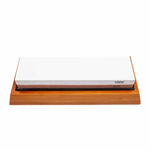5 Ways to Improve Your Knife Skills

Since the year 2020, cooking has become a hobby for a significant number of people. It can be especially fun when you’ve got knife skills to impress. These skills are actually a basic requirement for anyone who wishes to excel in the kitchen. So, whether you're a beginner yet enthusiastic cook or someone who simply wants to get the job done faster, we've got some pointers to help you improve your knife skills.
- Cut round produce in half first to create a flat surface.
Such a little thing but it makes all the difference. This makes it easier to chop, mince, slice, etc. without the fruits and veggies rolling around. And as a bonus tip, keep the knife at about the height of your elbow to put more control and pressure into the cut because you’re using gravity and muscle weight to your advantage. Remember that especially when cutting something big like a watermelon.
- Grasp the item you’re cutting with your fingers curled like a claw.
This something to consider no matter what you cut and it might take longer to get it right but we’re here to improve ourselves, right? Your fingertips should be pointing down toward the cutting board so you won’t expose your fingertips to the blade. This means that with the hand holding an onion, your knuckles, not your fingertips, are facing the blade doing the chopping as you move along.
- Keep your thumb and your index finger on the handle of the knife.
Make sure to do that as close to the blade as possible. Your thumb and knuckle of your forefinger should grip the blade of the knife, while the rest of your fingers wrap around the handle. This will give you better control and make it easier to use, but don’t hold it too tight.
- Cut with a front-to-back motion.
Forget the up and down motion, professionals advise using a front-to-back sawing machine motion for a better cutting experience. For that, you need to keep the tip of the knife on the surface of the cutting board and lift the handle up and down with a repetitive front-to-back sawing motion. Practice this motion and with a bit of time, you’ll be able to do this quickly and efficiently. Also, keeping the point of your knife on the cutting board allows you to instinctively know where your knife is at all times, which is key for safety.
- Sharpen your chef’s knife.
Keeping your knife sharp is also very important because a dull knife can be quite dangerous. No matter what type of knife you’ve got, with time, it’ll start losing the edge and we all know how bad it is to cut things with a dull knife. But don’t be quick to get rid of your dull knife, sharpening it is the better solution. If you don’t know how to sharpen your knife, check out this article to learn.
In conclusion: If you keep all of this advice in mind and practice as much as possible, you should have no problem advancing your knife skills. It might take a bit of time for some people but that’s nothing to be ashamed of. Just don’t be afraid of the knife, but be careful as well.
































